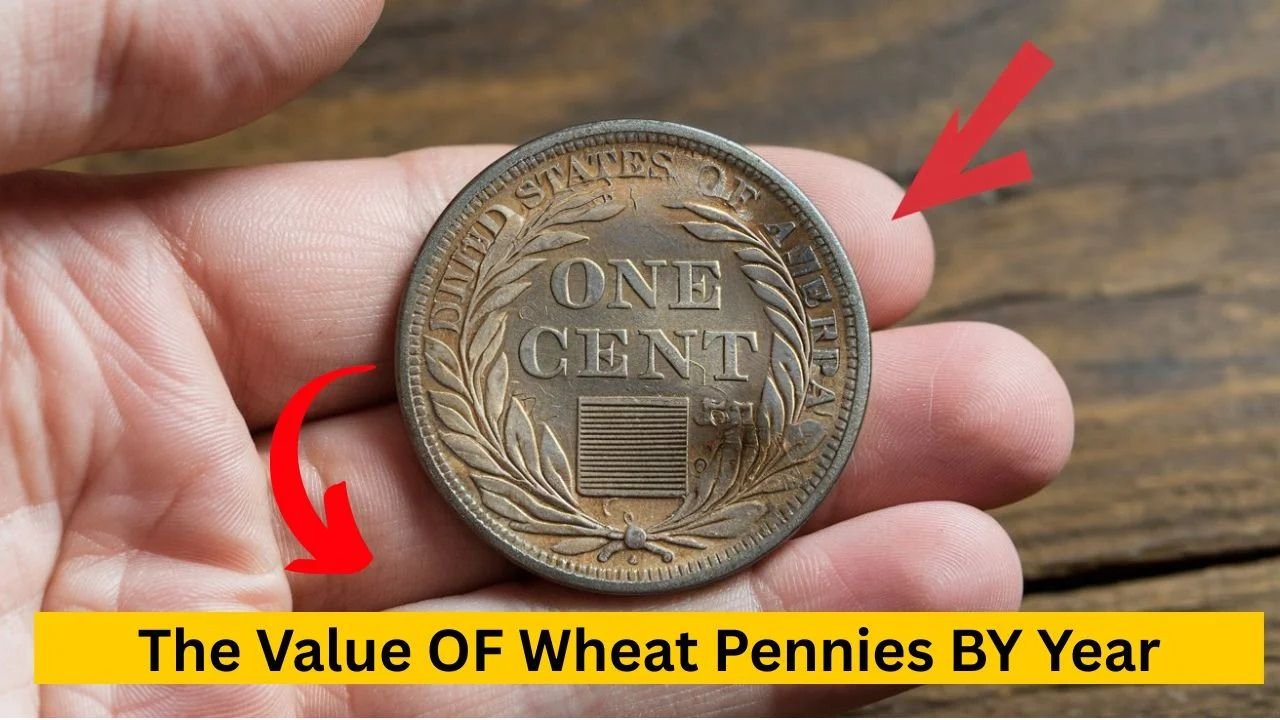The Value of Wheat Pennies By Year: Wheat pennies are one of the most popular coins collected in the United States. They were first introduced in 1909 to celebrate the 100th birthday of Abraham Lincoln. The coin quickly gained popularity, not only because it honored a beloved president, but also because of its beautiful wheat stalks on the back. For decades, these pennies were part of everyday circulation, and even today, people still find them in their change. Some are worth only a few cents, while others can be valued at hundreds or even thousands of dollars.
Why Collectors Love Wheat Pennies
Collectors love wheat pennies for many reasons. First, they represent a piece of American history, stretching from 1909 to 1958. Second, they are affordable and easy to find, which makes them perfect for beginner collectors. Finally, the possibility of finding a rare year or mint mark adds excitement. Even though most wheat pennies are common, the thrill of finding a special one makes people keep checking their pocket change.
Key Features of a Wheat Penny
The front of the wheat penny shows the profile of Abraham Lincoln, while the back features two wheat stalks circling the words “One Cent.” This simple design is where the coin got its nickname. Different mint marks were used to show where the coin was made, including “D” for Denver and “S” for San Francisco. These tiny letters, often overlooked by casual users, make a big difference in the value of the coin.
How Age Affects Value
The year of the coin is the first thing people notice when looking at a wheat penny. Older coins, especially those from the early 1900s, usually have more value because fewer of them survived. A 1909 penny, for example, is almost always more valuable than one from the 1950s. But it is not just the age that matters; the condition of the coin also plays a big role. A well-preserved penny with a clear date and shiny surface can be worth far more than the same coin that is heavily worn.
Mint Marks and Their Importance
Mint marks are small details that often separate a valuable coin from a regular one. A penny from 1914 with a “D” mint mark from Denver is one of the rarest and can be worth hundreds or even thousands depending on its condition. On the other hand, the same penny without a mint mark might only be worth a few cents. This is why collectors carefully check every detail before deciding how much a coin is worth.
Errors That Increase Value
Another thing that makes certain wheat pennies valuable is minting errors. Sometimes mistakes happened at the mint, such as double stamping or missing letters. These error coins were rare and unusual, making them highly desirable today. The 1955 double die penny is one of the most famous examples. Collectors pay a high price for it because the error is easy to see, and only a small number were made.
Table of Wheat Penny Values by Year
Here is a simple table showing general value ranges for some popular years. Keep in mind that values change depending on condition and demand.
| Year | Common Value Range | Special Notes |
|---|---|---|
| 1909 VDB | $5 – $50+ | First year issue, popular with collectors |
| 1914 D | $200 – $2,000+ | Rare and highly valuable |
| 1922 No D | $300 – $1,000+ | Mint error with missing mint mark |
| 1931 S | $75 – $150+ | Low mintage year |
| 1955 Double Die | $1,000 – $10,000+ | Famous error coin |
| 1958 | $0.10 – $0.25 | Last year of wheat pennies |
Why They Still Appear in Change
Even though wheat pennies stopped being made in 1958, they still appear in circulation today. This happens because people sometimes cash in old coin jars or collections. Every now and then, a handful of wheat pennies gets mixed back into everyday money. That is why it is always worth checking your change—you never know when you might find a hidden treasure.
How to Start Collecting
Starting a wheat penny collection is easy and fun. All you need is a little patience and attention to detail. Begin by looking through your loose change and setting aside any wheat pennies you find. From there, you can organize them by year and mint mark. Over time, you can trade with other collectors or buy missing coins to complete your set.
Conclusion
Wheat pennies are more than just old coins; they are small pieces of history. Their value depends on the year, mint mark, condition, and sometimes errors that make them unique. While most are only worth a few cents, a lucky find could be worth hundreds or even thousands of dollars. That possibility is what keeps collectors and everyday people checking their change with excitement.
Frequently Asked Questions
What is the rarest wheat penny?
The 1914 D penny and the 1922 “No D” error penny are among the rarest and most valuable.
Can I still find wheat pennies in my change?
Yes, although they are less common today, wheat pennies still show up in circulation from time to time.
How do I know if my wheat penny is valuable?
Check the year, mint mark, and overall condition. If you notice an error or unusual detail, it may be worth much more.




